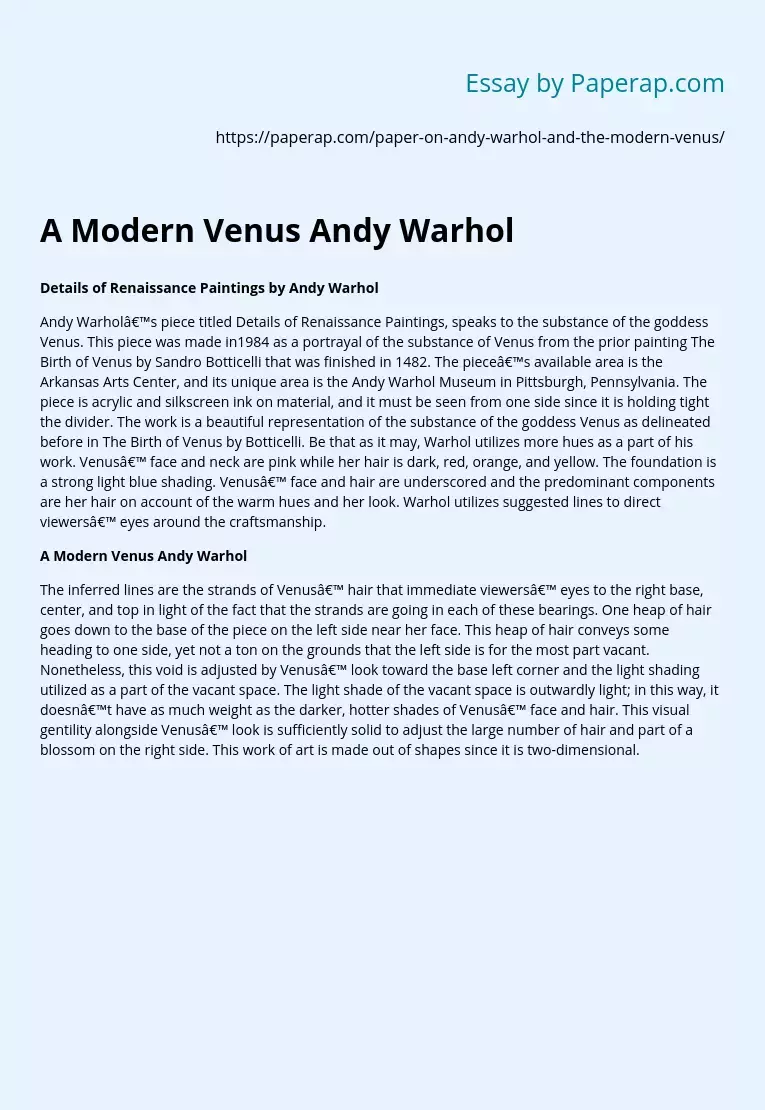A Modern Venus Andy Warhol
Details of Renaissance Paintings by Andy Warhol
Andy Warhol’s piece titled Details of Renaissance Paintings, speaks to the substance of the goddess Venus. This piece was made in1984 as a portrayal of the substance of Venus from the prior painting The Birth of Venus by Sandro Botticelli that was finished in 1482. The piece’s available area is the Arkansas Arts Center, and its unique area is the Andy Warhol Museum in Pittsburgh, Pennsylvania. The piece is acrylic and silkscreen ink on material, and it must be seen from one side since it is holding tight the divider.
The work is a beautiful representation of the substance of the goddess Venus as delineated before in The Birth of Venus by Botticelli. Be that as it may, Warhol utilizes more hues as a part of his work. Venus’ face and neck are pink while her hair is dark, red, orange, and yellow. The foundation is a strong light blue shading. Venus’ face and hair are underscored and the predominant components are her hair on account of the warm hues and her look.
Warhol utilizes suggested lines to direct viewers’ eyes around the craftsmanship.
A Modern Venus Andy Warhol
The inferred lines are the strands of Venus’ hair that immediate viewers’ eyes to the right base, center, and top in light of the fact that the strands are going in each of these bearings. One heap of hair goes down to the base of the piece on the left side near her face.
This heap of hair conveys some heading to one side, yet not a ton on the grounds that the left side is for the most part vacant. Nonetheless, this void is adjusted by Venus’ look toward the base left corner and the light shading utilized as a part of the vacant space. The light shade of the vacant space is outwardly light; in this way, it doesn’t have as much weight as the darker, hotter shades of Venus’ face and hair. This visual gentility alongside Venus’ look is sufficiently solid to adjust the large number of hair and part of a blossom on the right side. This work of art is made out of shapes since it is two-dimensional.
A Modern Venus Andy Warhol. (2019, Nov 27). Retrieved from https://paperap.com/paper-on-andy-warhol-and-the-modern-venus/

